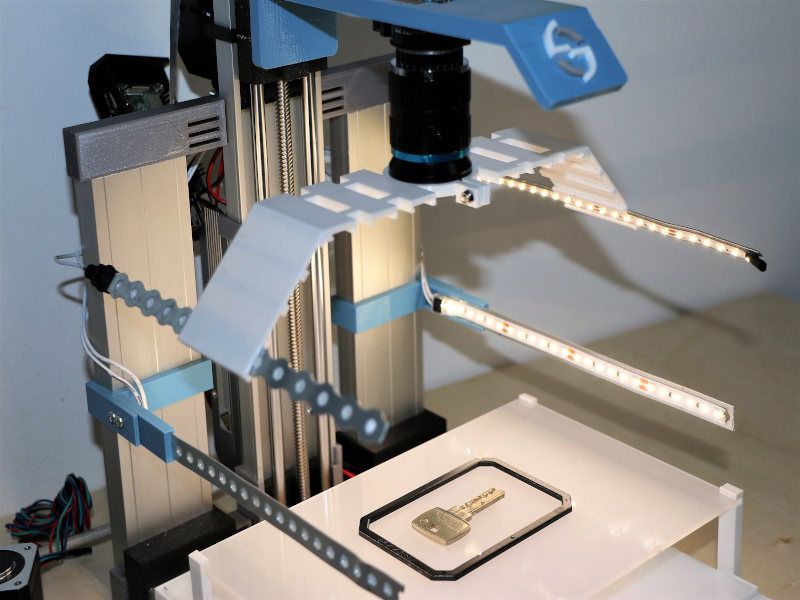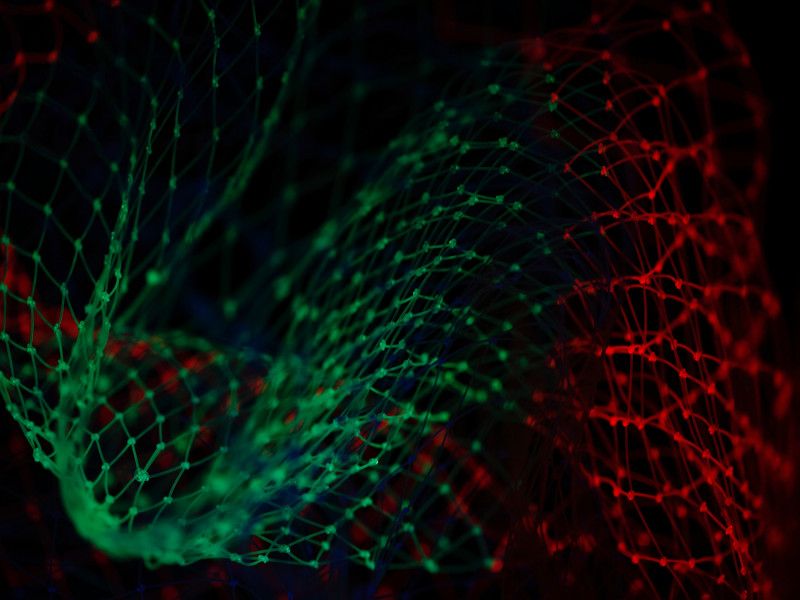Artificial intelligence

Digitization
Digitization converts analog information (data, objects, images …) into a digital format.
This step is elementary, is usually underestimated and should therefore be planned carefully. This is often where the greatest amount of work is found and this is where the quality of the AI -project is most affected. How the data is digitized depends on the object and the conditions.
There are many ways to digitize objects. The spectrum ranges from simple smartphones images to high-tech cameras. In some cases you can also access finished training data. For small and shiny objects Entrich Technologies has specially developed the Lightbox Mini This enables you to digitize and classify objects quickly and easily.
Our recommendation: Do not underestimate this area and seek advice from an expert.

Visualization
Visualization is the illustration of abstract data. In our case it means making the digitized data / objects visible.
The visualization can range from a simple photo to a complex 3D construction. How extensive this point is depends heavily on the desired goal. If artifacts are to be visualized on a homepage, exact measurements should be carried out on the object, or one only wants to receive training data for face recognition.
In any case, this point must be clarified in advance so that the corresponding digital data are available for the desired visualization.
Our recommendation: Clarify in advance what type or resolution of visualization you need.

Classification
This is where Artificial Intelligence begins to work its magic.
With the correct digital data and the required visualization resolution, neural networks can be trained and images or objects can be classified and recognized automatically. Based on these classifications, AI-powered solutions can be developed and work can be made simple.
The accuracy of these applications depends in many cases on the number and quality of the training data, but also on the algorithm used. The desired recognition rate and the processing of the data are determined based on the specific application. Should the data have been processed “At the edge” or in the cloud. What security level, what speed and what budget is available for the project?
Our recommendation: Determine the desired recognition rate right at the beginning.
Workflow
The basic framework of an AI project usually consists of three components. Digitization, Visualization and Classification. At the beginning it is essential to determine which goal the project is aiming for. What do you want to achieve? Often the expectations are either way too high or too low and the technology is greatly underestimated. However, at the beginning there are questions to be clarified like:
- What do we want to achieve?
- Which data / images / objects should be recognized or classified?
- Is there enough picture material?
- How high should the accuracy of the visualization or the error rate in the classification be?
- Where should the training or assessment take place?
What is …
-
Artificial intelligence (AI):
We understand AI as creating intelligent machines that work and react „with“ people. Our vision is to free people’s lives from routine activities and we use AI to help and support that concept.
-
Deep learning:
Deep learning is part of artificial intelligence that uses architectures such as deep neural networks and convolutional neural networks. This can be used to identify, classify or segment objects.
-
AI at the edge:
AI at the edge is becoming increasingly important. Especially with real time applications, slower internet connections or security concerns.
Speed and efficiency are crucial for AI-based solutions. Intel’s OpenVino accelerates the development of powerful deep learning solutions and makes conclusions quick. Openvino is very flexible and can be run locally on a PC, laptop, but also on a Raspberry Pi. This lays the foundation for the development of high quality and affordable applications.
-
Labeling:
Data labeling is an elementary part of the deep learning process. The correctly labeled data form the learning basis for future data processing.
-
Model selection:
Deep learning models use neural networks that use inputs to spit out a prediction. These models can be trained or customized in advance. The right choice is a key factor.
-
Face recognition:
Face recognition is used for the automated identification of people based on facial features.
-
People detection:
In the case of person recognition, the focus is on identifying the object as a person and not on its exact identity.
-
Image classification:
The image classification is used to assign a label to an entire image. It is best suited for situations where only one object of interest determines the overall understanding of the image.
-
Object detection:
If you want to identify the location and category of multiple objects in one image, object recognition is for you. . Each recognized object is identified and classified by means of a „bounding frame“ (colored frame).
